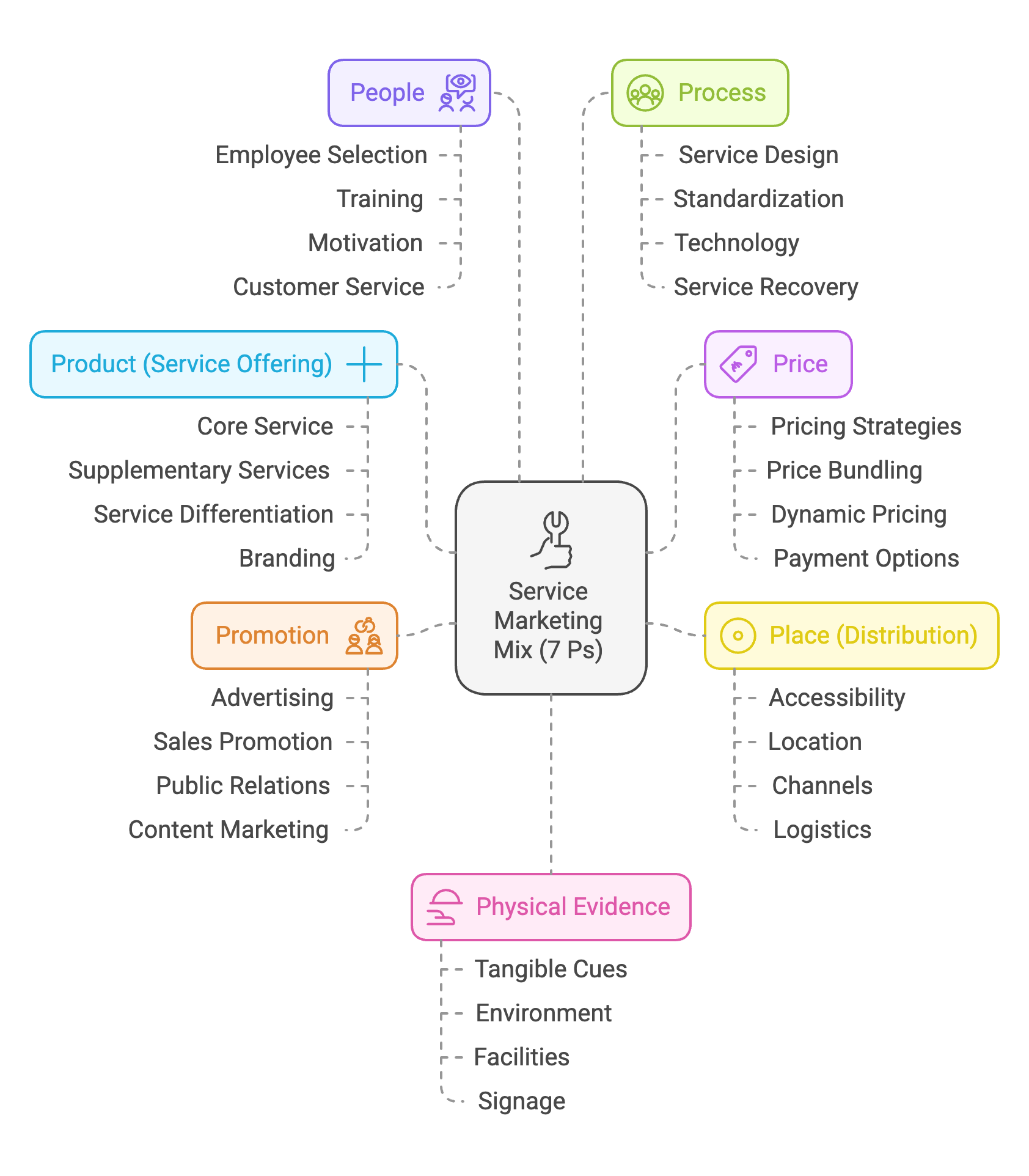Service Marketing Mix
The Service Marketing Mix (7 Ps)
The service marketing mix is an extended version of the traditional 4 Ps (Product, Price, Place, Promotion) used in marketing goods. It incorporates three additional elements to address the unique characteristics of services. These 7 Ps are:
1. Product (Service Offering)
- Core Service: The fundamental benefit that the customer seeks.
- Supplementary Services: Value-added services that enhance the core service.
- Service Differentiation: Creating unique and compelling service offerings.
- Branding: Building a strong brand identity and reputation.
Example: For a hotel, the core service is accommodation, while supplementary services may include Wi-Fi, room service, and a fitness center.
2. Price
- Pricing Strategies: Cost-plus pricing, value-based pricing, competition-based pricing.
- Price Bundling: Offering packages of services at a combined price.
- Dynamic Pricing: Adjusting prices based on demand and availability.
- Payment Options: Providing flexible payment methods.
Example: An airline uses dynamic pricing, adjusting ticket prices based on the time of year, day of the week, and seat availability.
3. Place (Distribution)
- Accessibility: Making the service easily accessible to customers.
- Location: Choosing convenient and appropriate service locations.
- Channels: Utilizing various distribution channels (online, phone, in-person).
- Logistics: Ensuring smooth and efficient service delivery.
Example: A bank offers online banking, mobile banking, and ATM services for convenient access to its services.
4. Promotion
- Advertising: Utilizing various media to create awareness and interest.
- Sales Promotion: Offering incentives and discounts to attract customers.
- Public Relations: Building a positive image and managing reputation.
- Content Marketing: Creating valuable content to engage and inform customers.
Example: A streaming service uses social media and online advertising to promote its latest shows and movies.
5. People
- Employee Selection: Recruiting and hiring qualified and customer-oriented staff.
- Training: Providing employees with the necessary skills and knowledge.
- Motivation: Creating a positive and motivating work environment.
- Customer Service: Empowering employees to deliver excellent customer service.
Example: A restaurant invests in training its waitstaff to provide friendly and efficient service.
6. Process
- Service Design: Designing efficient and customer-friendly service processes.
- Standardization: Ensuring consistency in service delivery.
- Technology: Utilizing technology to improve service efficiency and effectiveness.
- Service Recovery: Having systems in place to handle service failures.
Example: An e-commerce company optimizes its website and checkout process for a seamless online shopping experience.
7. Physical Evidence
- Tangible Cues: Using physical elements to represent the intangible service.
- Environment: Creating a welcoming and comfortable service environment.
- Facilities: Maintaining clean and well-maintained facilities.
- Signage: Providing clear and informative signage.
Example: A spa creates a relaxing atmosphere with soothing music, calming décor, and pleasant aromas.
By effectively managing all 7 Ps of the service marketing mix, businesses can create a competitive advantage, deliver exceptional customer experiences, and achieve long-term success in the service sector.


No Comments